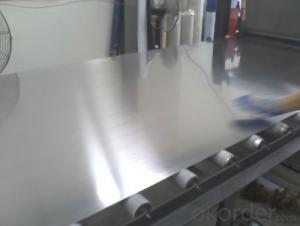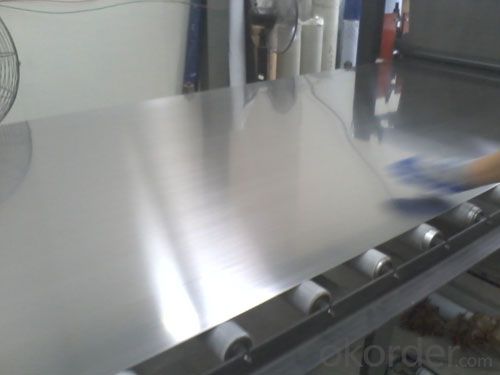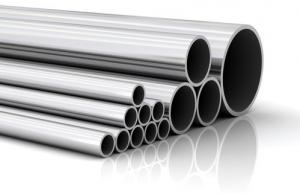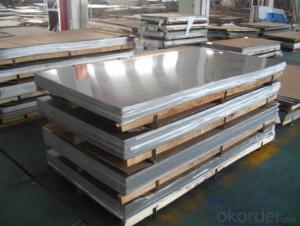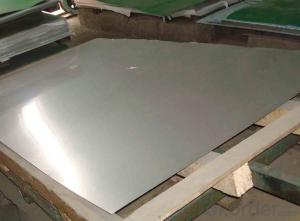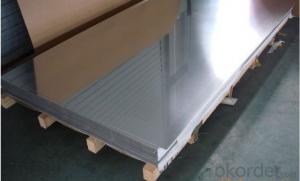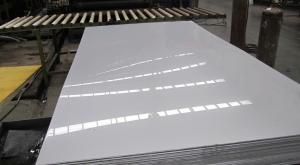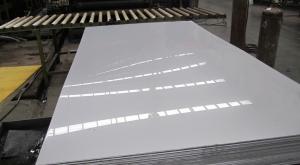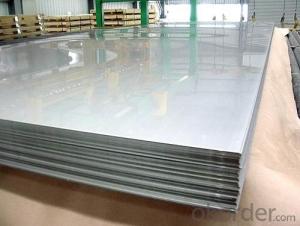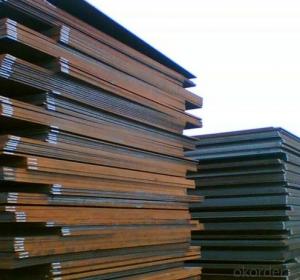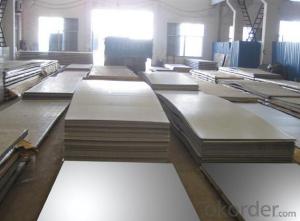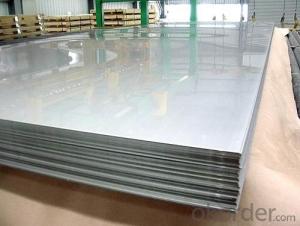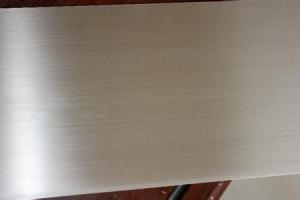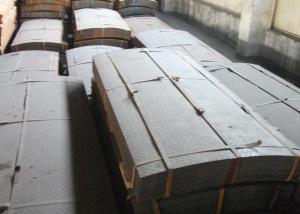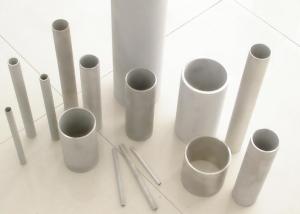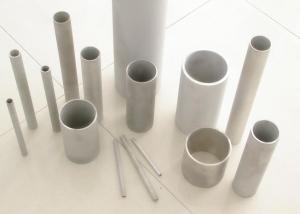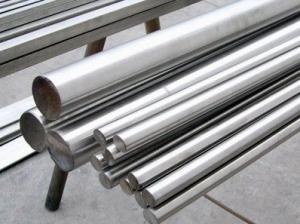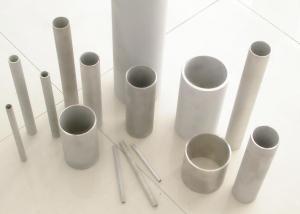Good Quality Stainless Steel Plate
- Loading Port:
- China Main Port
- Payment Terms:
- TT OR LC
- Min Order Qty:
- -
- Supply Capability:
- -
OKorder Service Pledge
OKorder Financial Service
You Might Also Like
According to the method of cold and hot points two kinds, including 0.5 4 mm thickness of plates and 4.5-35 mm thick plate.
According to the characteristics of the steel group is divided into five categories: austenitic size, austenitic grain size, iron-iron grain size, shape, markov precipitation sclerosis type.
Requests can withstand oxalic acid, sulfuric acid, nitric acid, nitric acid-ferric sulfate-hydrofluoric acid, sulfuric acid, phosphoric acid, formic acid, copper sulfate, acetic acid, etc. Various kinds of acid corrosion, widely used in chemical industry, food, medicine, paper making, oil, atomic energy industry etc, as well as the construction, kitchen utensils, tableware, vehicles of all kinds of parts, household appliances.
In order to ensure that each kind of stainless steel plate of the yield strength, tensile strength, elongation and hardness of mechanics performance accords with a requirement, steel plate must pass before delivery annealing, solid solution treatment, aging treatment of heat treatment, etc.
Stainless steel plate [1] the surface is bright and clean, have a high plasticity and toughness and mechanical strength, acid and alkaline gas and other media, the solution of the corrosion. It is not an easy to rust of alloy, but not absolutely doesn't rust.
Stainless steel corrosion depends primarily on its alloy composition (chrome, nickel, titanium, silicon, aluminum, etc) and internal organizational structure, plays a main role is chrome elements. Chrome has the very high chemical stability, can in the steel surface passivation membrane formation, the metal and isolated, protect steel plate were not oxidation, enhance the steel corrosion resistance. Passivation membrane destruction, the corrosion resistance will decline.
- Q: Can stainless steel sheets be embossed or textured?
- Yes, stainless steel sheets can be embossed or textured. This process involves imprinting patterns or designs onto the surface of the stainless steel sheets, adding visual interest and texture to the material.
- Q: What are the different finishes available for stainless steel sheets?
- Some common finishes available for stainless steel sheets include brushed, mirror, satin, and textured finishes.
- Q: Can stainless steel sheets be used for heat transfer applications?
- Yes, stainless steel sheets can be used for heat transfer applications. Stainless steel has excellent thermal conductivity, making it suitable for transferring heat efficiently between two surfaces or mediums. It is commonly used in heat exchangers, cookware, and other applications where heat transfer is essential.
- Q: Do stainless steel sheets require any special handling or storage?
- Yes, stainless steel sheets do require some special handling and storage to maintain their quality and prevent damage. Here are a few key points to consider: 1. Handling: When handling stainless steel sheets, it is important to wear gloves to avoid leaving fingerprints and oils on the surface, which can lead to corrosion. Additionally, sharp tools should be avoided while handling to prevent scratching the surface. 2. Cleaning: Prior to storage, stainless steel sheets should be thoroughly cleaned to remove any dirt, debris, or moisture. This helps to prevent the formation of rust or corrosion during storage. Mild soap or a specialized stainless steel cleaner can be used for cleaning. 3. Storage: Stainless steel sheets should be stored in a clean, dry, and well-ventilated area. They should be kept away from direct sunlight, extreme temperatures, and moisture, as these factors can lead to corrosion. Ideally, they should be stored in a covered area or wrapped in protective materials like plastic or cloth to prevent scratches and damage. 4. Separation: It is important to separate different sheets to avoid contact and potential scratching or damage. This can be achieved by using dividers or interleaf papers between the sheets. 5. Handling equipment: When moving or transporting stainless steel sheets, it is recommended to use appropriate handling equipment like forklifts or cranes. This ensures safe and secure movement without causing any dents or scratches. By following these handling and storage guidelines, stainless steel sheets can be effectively protected and maintained in optimal condition for their intended use.
- Q: Are stainless steel sheets resistant to UV rays?
- Yes, stainless steel sheets are resistant to UV rays. Stainless steel is known for its durability and corrosion resistance, and this extends to its ability to withstand exposure to UV rays. The chromium content in stainless steel forms a protective oxide layer on the surface, which helps prevent the metal from oxidizing or corroding when exposed to sunlight. This oxide layer acts as a barrier that shields the stainless steel from UV rays, making it highly resistant to the damaging effects of prolonged sun exposure. Therefore, stainless steel sheets are an excellent choice for outdoor applications where UV resistance is a requirement, such as roofing, cladding, and architectural elements.
- Q: Are stainless steel sheets suitable for roofing?
- Yes, stainless steel sheets are suitable for roofing. They have excellent durability, corrosion resistance, and can withstand extreme weather conditions. Additionally, their sleek appearance adds aesthetic value to any building.
- Q: How do you determine the weight of a stainless steel sheet?
- To determine the weight of a stainless steel sheet, one must take into account its dimensions, thickness, and density. The first step involves using a measuring tool, such as a ruler or caliper, to measure the length, width, and thickness of the sheet. It is crucial to ensure that all measurements are taken in the same unit of measurement, such as inches or millimeters, for accuracy. Next, the density of stainless steel needs to be determined. Typically, stainless steel has a density of approximately 7.9 grams per cubic centimeter (g/cm³) or 7900 kilograms per cubic meter (kg/m³). However, it is important to note that this value may slightly vary depending on the specific grade or alloy of stainless steel being used. Once the dimensions and density are known, the weight can be calculated using the formula: weight = volume × density. To find the volume, one should multiply the length, width, and thickness of the sheet. For instance, if a stainless steel sheet measures 1 meter by 1 meter and has a thickness of 2 millimeters, the volume would be 0.001 cubic meters (1m x 1m x 0.002m). By utilizing the density of stainless steel (7900 kg/m³), one can then determine the weight by multiplying the volume by the density. In the given example, the weight of the stainless steel sheet would amount to 7.9 kilograms (0.001m³ x 7900 kg/m³). It is essential to bear in mind that this calculation provides an approximate weight, assuming a consistent thickness throughout the entire sheet. Furthermore, variations in composition or manufacturing processes may result in slight deviations in the density of the stainless steel, thereby affecting the accuracy of the weight calculation.
- Q: How do I bend or form stainless steel sheets?
- To achieve the bending or forming of stainless steel sheets, the following steps can be followed: 1. The first step is to select the appropriate stainless steel grade. Stainless steel is available in various grades, each with its own unique properties. It is important to choose the grade that best fits the requirements of your project, considering factors such as corrosion resistance, strength, and formability. 2. The next step involves using the correct tools. Specific tools like a hydraulic press brake or a metal bending machine are necessary for bending stainless steel sheets. These tools apply force evenly, ensuring precise and consistent bends. It is crucial to use tools that are designed for stainless steel in order to avoid damaging the material. 3. Before bending, it is essential to prepare the stainless steel sheet. This includes ensuring that the sheet is clean and free from any dirt or debris. Additionally, marking the desired bending lines on the sheet using a pencil or tape can serve as a guide throughout the process. 4. The bending angle and radius need to be determined based on the specific requirements of the project. This can be done by using a protractor or a template to accurately measure and mark the desired angles. 5. To prevent any movement or slipping during the bending process, it is important to securely clamp the stainless steel sheet to the bending tool or machine. This will ensure stability and accuracy throughout the bending process. 6. The next step involves applying pressure gradually. It is recommended to start the bending process slowly and gradually increase the pressure. This helps prevent the stainless steel sheet from cracking or warping. Close attention should be paid to the bending process to ensure that the desired shape is achieved without any defects or deformation. 7. If there is a need to create multiple bends or complex shapes, the process can be repeated as necessary. Each bend should be carefully measured and aligned with the previous bends to achieve a consistent and accurate result. 8. After bending the stainless steel sheet, any residual marks or burrs can be removed using a file or sandpaper. This will give the finished product a smooth and polished appearance. It is important to keep in mind that bending stainless steel sheets can be challenging, particularly for thicker gauges or harder grades. It is advisable to practice on scrap pieces or seek professional assistance if you are uncertain or lack experience in working with stainless steel.
- Q: What is the function of a stainless steel plate at the top of the steel chimney?
- Many stainless steel grades, different properties, and in the course of its development has gradually formed several categories. According to the structure of the organization, it is divided into four categories: martensitic stainless steel (including precipitation hardening stainless steel), ferritic stainless steel, austenitic stainless steel and austenitic ferrite duplex stainless steel;
- Q: What are the benefits of using stainless steel sheets?
- There are several benefits of using stainless steel sheets. Firstly, stainless steel is highly durable and resistant to corrosion, making it suitable for various applications in different environments. Secondly, stainless steel is easy to clean and maintain, making it a hygienic choice for industries such as food processing and medical facilities. Additionally, stainless steel sheets have a sleek and modern appearance, making them aesthetically pleasing for architectural and design purposes. Lastly, stainless steel is recyclable and environmentally friendly, making it a sustainable choice.
Send your message to us
Good Quality Stainless Steel Plate
- Loading Port:
- China Main Port
- Payment Terms:
- TT OR LC
- Min Order Qty:
- -
- Supply Capability:
- -
OKorder Service Pledge
OKorder Financial Service
Similar products
Hot products
Hot Searches
Related keywords
